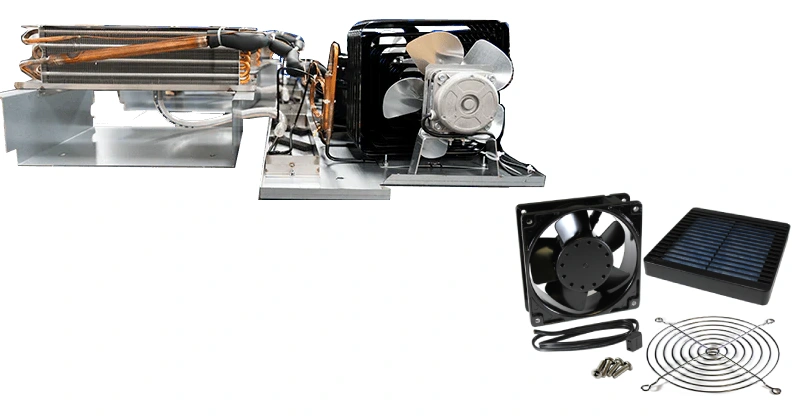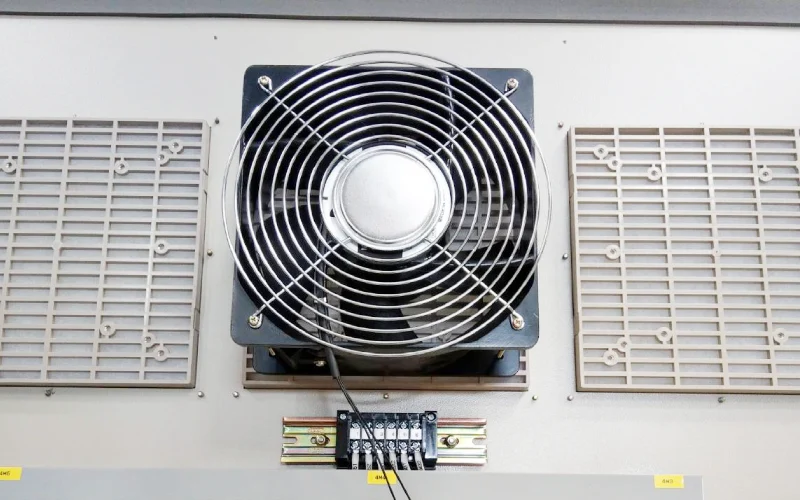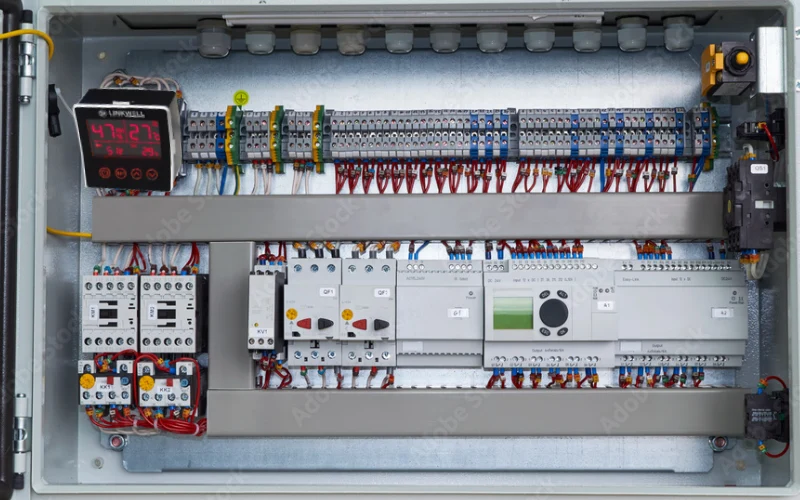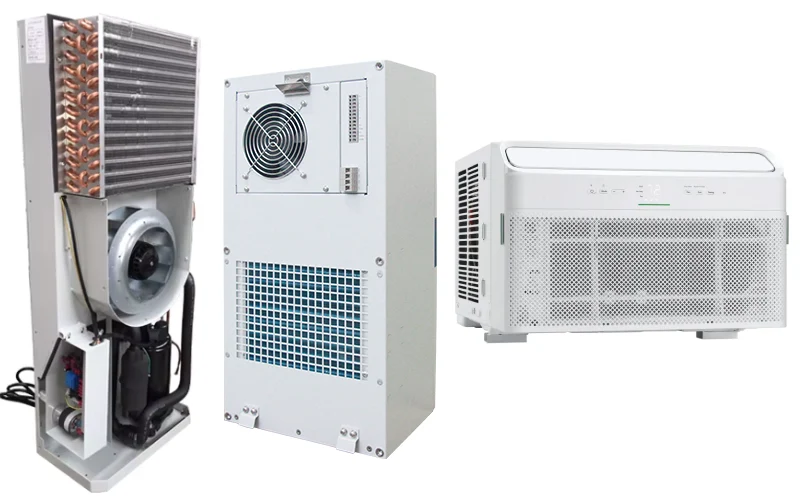When you look at Vending Machine Fans vs Cabinet Fans, you’ll spot some clear differences right away. Vending machine fans move cold air to keep drinks chilled and push heat out from the compressor. Cabinet fans, like the ones from Linkwell, focus on cooling electrical enclosures and protecting sensitive equipment. You need the right fan for your setup. Linkwell’s cabinet cooling solutions help you keep your systems running smoothly, no matter the challenge.
Key Takeaways
- Vending machine fans keep drinks cold by moving air in tight spaces. They focus on cooling and heat dissipation in small areas.
- Cabinet fans protect sensitive electronics by cooling larger enclosures. They handle tougher environments and require more airflow.
- Choose the right fan size and type for your setup. Proper fit improves cooling performance and extends equipment life.
- Investing in high-quality cabinet fans saves money long-term. They offer energy efficiency and durability, reducing repair costs.
- Regular maintenance of fans is essential. Clean filters and check for dust to prevent
- overheating and ensure smooth operation.

Design Comparison
Structure & Size
When you look at vending machine fans, you’ll notice they come in compact shapes. These fans fit into tight spaces inside vending machines. You usually find two main types: evaporator fans and condenser fans. The evaporator fan sits near the cooling coils and pushes cold air over the drinks. The condenser fan stays near the compressor and helps move hot air out.
Cabinet fans, like Linkwell’s Electrical Enclosure Fans, have a different job. You often see them in larger, boxy shapes. These fans need to move more air to keep electrical parts cool. Linkwell designs its fans to fit standard cabinet cutouts, so you can install them easily. You also get options for different sizes, which means you can pick the right fan for your cabinet, whether it’s small or huge.
Tip: Always check the size of your enclosure or vending machine before picking a fan. The right fit makes a big difference in cooling performance.
Materials
Vending machine fans usually use lightweight plastics and basic metals. These materials keep costs down and work well for indoor use. However, vending machines often run in places with steady temperatures, so the fans don’t need to handle harsh conditions.
Cabinet fans, especially those from Linkwell, use tougher materials. You get weatherproof housings, high-quality bearings, and durable plastics or metals. These fans can handle dust, moisture, and high heat. That’s important if you run equipment outdoors or in factories.
Here’s a quick look at how energy standards and new technology shape fan design today:
| Region | Regulation/Directive | Description |
|---|---|---|
| U.S. | National Appliance Conservation Act | Sets minimum energy efficiency for appliances. |
| U.S. | ENERGY STAR | Requires strict energy savings for certified products. |
| EU | Directive 2009/125/EC | Reduces electrical usage for energy-related products. |
| General | EC motors and fans | Offer big energy savings, especially for fans that run all the time. |
Modern cabinet fans, like those from Linkwell, often use EC motors and meet these standards. This means you get better energy efficiency and longer-lasting performance. When you choose a fan, look for these features to save money and protect your equipment.
Functional Differences
Intended Use
You might think all cooling fans do the same job, but their intended uses set them apart. Vending machine fans work inside vending machines to keep drinks cold and make sure the machine runs smoothly. You’ll find two main types: evaporator fans and condenser fans. The evaporator fan moves cold air over the drinks, while the condenser fan pushes hot air out of the machine. These fans focus on heat dissipation in a small, controlled space.
Cabinet fans, like Linkwell’s Electrical Enclosure Fans, have a different mission. You use these cooling fans in industrial control cabinets, telecom boxes, and electrical enclosures. Their main job is to protect sensitive electronics from overheating. They keep the temperature steady and help with heat dissipation in larger, more complex environments. You often see these cooling fans in factories, server rooms, or outdoor telecom cabinets.
Here’s a quick comparison of the environments where you’ll find these fans:
| Factor | Vending Machine Fans | Cabinet Fans (Linkwell) |
|---|---|---|
| Airflow Requirements | Moderate, focused on product area | High, covers entire enclosure |
| Static Pressure | Low, minimal resistance | High, must overcome filters and ducts |
| Noise Levels | Low, for public spaces | Low to moderate, depends on location |
| Type of Motor | Standard, cost-effective | High-efficiency, durable for long-term use |
Cooling Fans: Airflow & Cooling
The way cooling fans handle airflow and cooling depends on where you use them. In vending machines, cooling fans move air across the evaporator coils for even cooling and direct heat dissipation from the compressor. These fans don’t face much resistance, so they don’t need to be very powerful.
In contrast, cabinet cooling fans must push air through filters and sometimes ducts. This means they need to handle higher static pressure for effective heat dissipation. You want these cooling fans to keep electronics safe, especially in places with lots of dust or heat.
Keep in mind, environmental factors matter.
- High temperatures can make cabinet cooling fans less effective.
- Humidity and airborne particles can also hurt fan performance and even damage equipment.
- Cabinet cooling fans work best in clean, cool air. If you have a harsh environment, you might need a closed-loop system or an air conditioner.
Tip: Always match your cooling fans to your environment. The right choice helps with heat dissipation and keeps your equipment running longer.
Vending Machine Fans vs Cabinet Fans: Performance
Efficiency
When you compare vending machine fans vs cabinet fans, you notice big differences in efficiency. Vending machine fans focus on moving air inside a small, closed space. They use just enough power to keep drinks cold and push heat out. Most of the time, these fans run at a fixed speed. You do not need a lot of airflow, so the energy use stays low.
Cabinet fans, like the ones from Linkwell, work in bigger spaces. They cool electrical parts that can get very hot. You often see variable speed fans in these setups. These fans adjust their speed based on how much cooling you need. This saves power and keeps your equipment safe. If you want the best efficiency, look for variable speed fans that match the size of your cabinet. You get more control and lower energy bills.
Tip: Choosing the right fan size and speed can boost efficiency and cut down on wasted power.
Noise
Noise matters when you pick between vending machine fans vs cabinet fans. Vending machine fans usually run quietly. You find these machines in offices, schools, and public places. People do not want to hear loud fans while they grab a drink. Manufacturers design these fans to keep noise low, even when they run all day.
Cabinet fans can be a bit louder, especially if they move a lot of air. In factories or telecom rooms, noise is less of a problem. You might not even notice it. Still, Linkwell offers low-noise options for places where quiet matters. Variable speed fans help here, too. They slow down when less cooling is needed, which means less noise and less power used.
Here is a quick list of what affects fan noise:
- Fan speed (higher speed = more noise)
- Blade design
- Motor type (variable speed fans are usually quieter)
- Where you install the fan
Durability
Durability is a key factor in the vending machine fans vs cabinet fans debate. You want fans that last, no matter where you use them. Vending machine fans face steady indoor conditions, but they still need to run for years without failing. Cabinet fans often work in tougher spots—factories, outdoor enclosures, or dusty telecom boxes.
Let’s look at the most important durability features you should consider:
| Durability Feature | Description |
|---|---|
| Robust Materials | Stainless steel or corrosion-resistant metals fight rust and wear from moisture. |
| Insulation | Double-walled construction with quality foams keeps internal temperatures steady. |
| Climate Control Mechanisms | Advanced cooling tech, like high-efficiency compressors and fans, ensures even air flow. |
| Weather Resistance | Weatherproof designs protect against rain, dust, and harsh environments. |
Linkwell cabinet fans use weatherproof housings and high-quality bearings. These features help the fans last longer, even in extreme heat or cold. You also get options for variable speed fans, which put less stress on the motor and extend the life of your equipment. When you compare vending machine fans vs cabinet fans, always check the durability specs. The right choice means fewer breakdowns and less money spent on repairs.
Note: A durable fan saves you time and money. You avoid downtime and keep your systems running strong.
Installation & Maintenance
Installation
You want a fan that installs quickly and fits your setup. Linkwell’s Electrical Enclosure Fans make this easy. You get fans that match standard cabinet cutouts, so you don’t need special tools or complicated steps. Most models come with clear instructions. You just line up the fan, secure it, and connect it to your power source. If you need to add a thermostat or hygrostat, Linkwell fans work with those, too. You can finish the job in minutes.
Vending machine fans need a different approach. You usually work in tight spaces. You might have to remove panels or reach behind shelves. Evaporator fans sit near the cooling coils, while condenser fans stay close to the compressor. You need to check the wiring and make sure the fan fits the mounting brackets. Sometimes, you need to replace the fan with the same model to avoid problems with airflow or cooling.
Here’s a quick table to help you compare:
| Feature | Linkwell Cabinet Fans | Vending Machine Fans |
|---|---|---|
| Installation Time | Fast, simple | Moderate, tight spaces |
| Tools Needed | Basic | Basic, sometimes special |
| Compatibility | Standard cutouts, OEM/ODM | Model-specific |
Tip: Always check the fan size and mounting type before you start. This saves you time and avoids mistakes.
Maintenance
Keeping your fans in good shape means less downtime and fewer repairs. Linkwell’s cabinet fans need very little maintenance. You just clean or replace the air filter and check for dust. The weatherproof housing keeps out moisture and dirt. High-quality bearings last longer, so you don’t have to worry about frequent replacements.
Vending machine fans need regular attention, too. Dirt and heat are the biggest problems. If the air filter gets clogged, airflow drops and the fan motor can overheat. Motors that run too hot lose lubrication, especially in sleeve bearing fans. Ball bearing fans last longer, but you still need to keep them clean. You should check the filters and make sure the temperature inside the machine stays safe for all parts.
Note: Regular cleaning and filter checks help prevent fan failure. You protect your equipment and keep everything running smoothly.
Application Suitability
Vending Machine Fan Uses
You see vending machine fans working hard behind the scenes every day. These fans keep your drinks cold and your snacks fresh. Inside a vending machine, you usually find two main types of fans: evaporator fans and condenser fans. The evaporator fan sits near the cooling coils. It blows cold air over the products, making sure every soda or snack stays at the perfect temperature. The condenser fan, on the other hand, helps move hot air out of the machine. This keeps the cooling system running smoothly.
Vending machine fans do more than just move air. They play a big part in customer satisfaction. When you grab a cold soda or a hot coffee, you can thank these fans for keeping everything just right. They work in small, controlled spaces, so they don’t need to be huge or super powerful. Instead, they focus on steady, reliable airflow to maintain the right temperature for every product inside the machine.
Tip: If you notice your vending machine isn’t cooling properly, the fan might need a quick check or cleaning.
Cabinet Fan Uses
Cabinet fans step up when you need to protect sensitive electronics and equipment. You find these fans in places like industrial control panels, telecom boxes, and even media centers. Linkwell’s cabinet fans stand out because they handle tough jobs in harsh environments. They keep electrical enclosures cool, prevent overheating, and help your equipment last longer.
Here’s a quick look at where you might use a cabinet fan:
| Application Type | Description |
|---|---|
| Telecommunications | Keeps routers and receivers cool, managing low heat in telecom cabinets. |
| Portable Compressor Drives | Cools drives for small compressors, perfect for clean indoor spaces. |
| Small Indoor Data Servers | Maintains safe temperatures for servers and network switches, with options for extra cooling. |
| Power Conditioners | Prevents hot spots in surge protectors and UPS systems by circulating air. |
| Media Equipment | Protects AV receivers and consoles, usually in indoor setups. |
| Control Panels | Removes heat from industrial panels, with flexible options for multiple fans if needed. |
Linkwell’s cabinet fans meet strict safety and quality standards like UL, CE, and ISO. You get features like weatherproof housings, insect screens, and flame-trap vents. These fans keep your enclosures safe and your equipment running, even in tough conditions.
Note: Choosing the right cabinet fan helps you avoid costly downtime and keeps your systems performing at their best.
Cost Factors
Initial Cost
When you shop for fans, price often grabs your attention first. Vending machine fans usually cost less up front. These fans use basic materials and simple designs. You can find replacement fans for vending machines at a lower price because they fit standard models and don’t need extra features.
Cabinet fans, especially those from Linkwell, might cost a bit more at the start. You pay for tougher materials, weatherproof housing, and advanced technology. These fans come with certifications like UL, CE, and ISO. You get options for custom sizes and smart controls. If you need a fan for a harsh environment or a big industrial cabinet, you want to invest in quality.
Here’s a quick table to help you compare:
| Fan Type | Typical Initial Cost | Key Features |
|---|---|---|
| Vending Machine Fan | Low | Basic design, standard size |
| Cabinet Fan (Linkwell) | Moderate to High | Durable, certified, customizable |
Tip: Don’t just look at the price tag. Think about where you’ll use the fan and what features you need.
Long-Term Value
You want your investment to last. Vending machine fans work well for short-term needs. If you run a small vending business, you might replace fans every few years. These fans do their job, but you may spend more on repairs and replacements over time.
Cabinet fans from Linkwell offer strong long-term value. You get energy-efficient motors that cut down your power bills. The weatherproof housing protects against dust and moisture. High-quality bearings mean fewer breakdowns. You spend less on maintenance and avoid costly downtime. These fans help your equipment last longer, which saves you money in the long run.
Here are some reasons why Linkwell cabinet fans stand out:
- Energy savings up to 30%
- Long service life (30,000–50,000 hours)
- Easy filter replacement
- Support for smart climate control
Note: Investing in a high-quality cabinet fan pays off. You get peace of mind and lower costs year after year.
When you pick between vending machine fans and cabinet fans, you need to think about your space, cooling needs, and long-term goals. Cabinet fans, like those from Linkwell, give you strong airflow and protect your equipment in tough spots. You save energy with motors that use less power and cut your bills by up to 30%. High-quality fans last longer, so you spend less on repairs and replacements. You also get steady energy savings every season. If you want your systems to run smoothly, choose a fan that matches your energy needs and keeps your equipment safe. Reliable fans help you avoid downtime and keep your energy costs low. You will notice that energy-efficient fans make a real difference in your daily operations. Over time, the right fan pays for itself through energy savings and fewer breakdowns. Make energy a top priority when you select your next fan. You will see better performance, lower energy bills, and longer equipment life. Energy matters most for your bottom line.
FAQ
What makes cabinet fans different from vending machine fans?
You use cabinet fans to cool electrical enclosures and protect sensitive gear. Vending machine fans focus on moving air for cooling drinks or snacks. Cabinet fans often handle tougher environments and offer more options for airflow and durability.
Can I use a cabinet fan in a vending machine?
You should not swap these fans. Cabinet fans work best in enclosures with electronics. Vending machine fans fit specific spots and cooling needs. Always choose the right fan for your equipment to get the best results.
How do cabinet fans help with data center energy efficiency?
Cabinet fans keep electronics cool, which helps your data center run more efficiently. You reduce the load on computer room air conditioning systems. This setup unlocks energy saving potential and lowers your power bills over time.
How often should I maintain my cabinet fan?
You should check your cabinet fan every few months. Clean or replace filters and remove dust. Regular maintenance keeps airflow strong and extends the life of your equipment.
Do Linkwell cabinet fans support smart climate control?
Yes, you can connect Linkwell cabinet fans with thermostats or hygrostats. This setup lets you automate cooling and maintain the perfect environment for your electronics.




